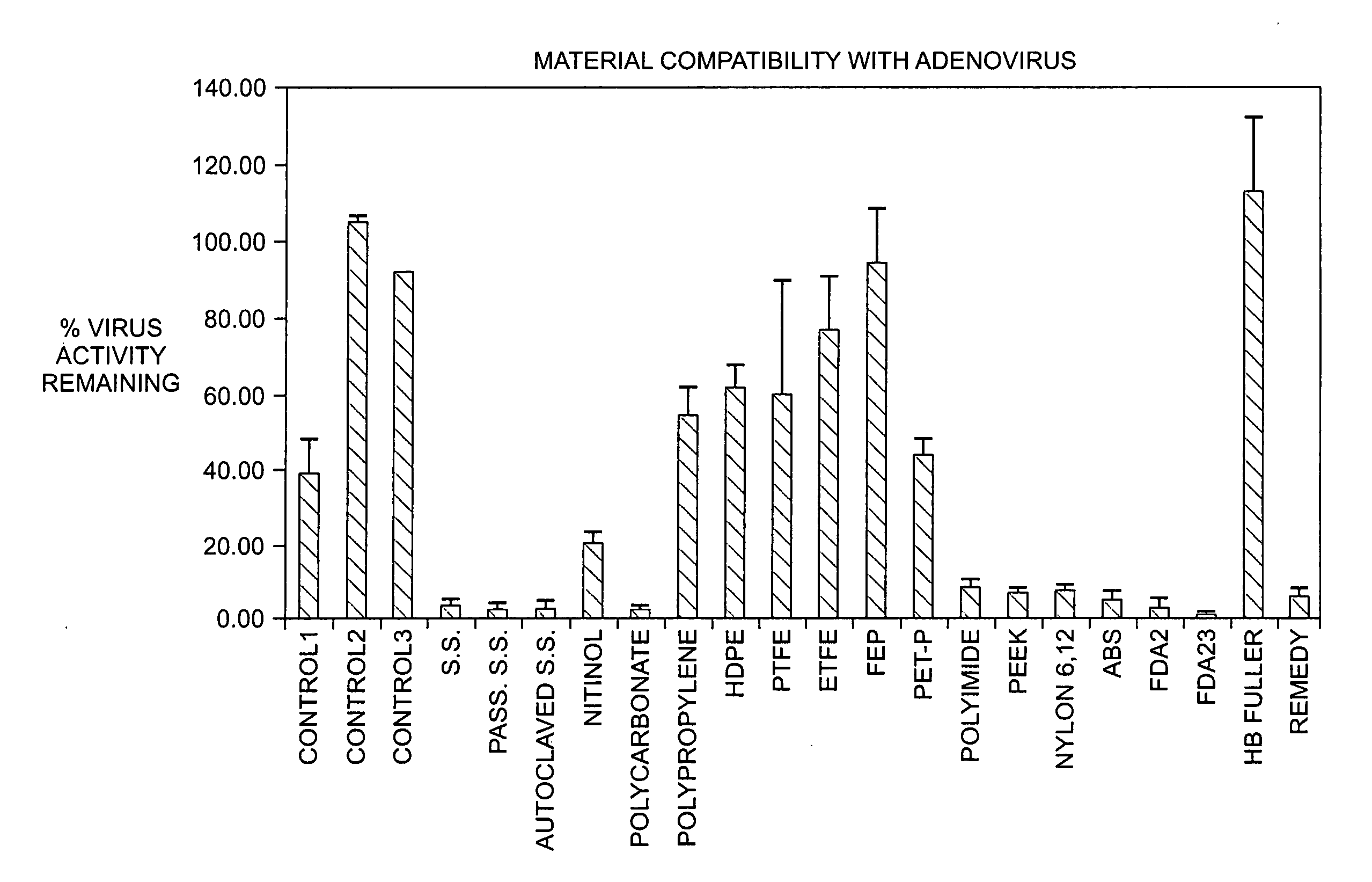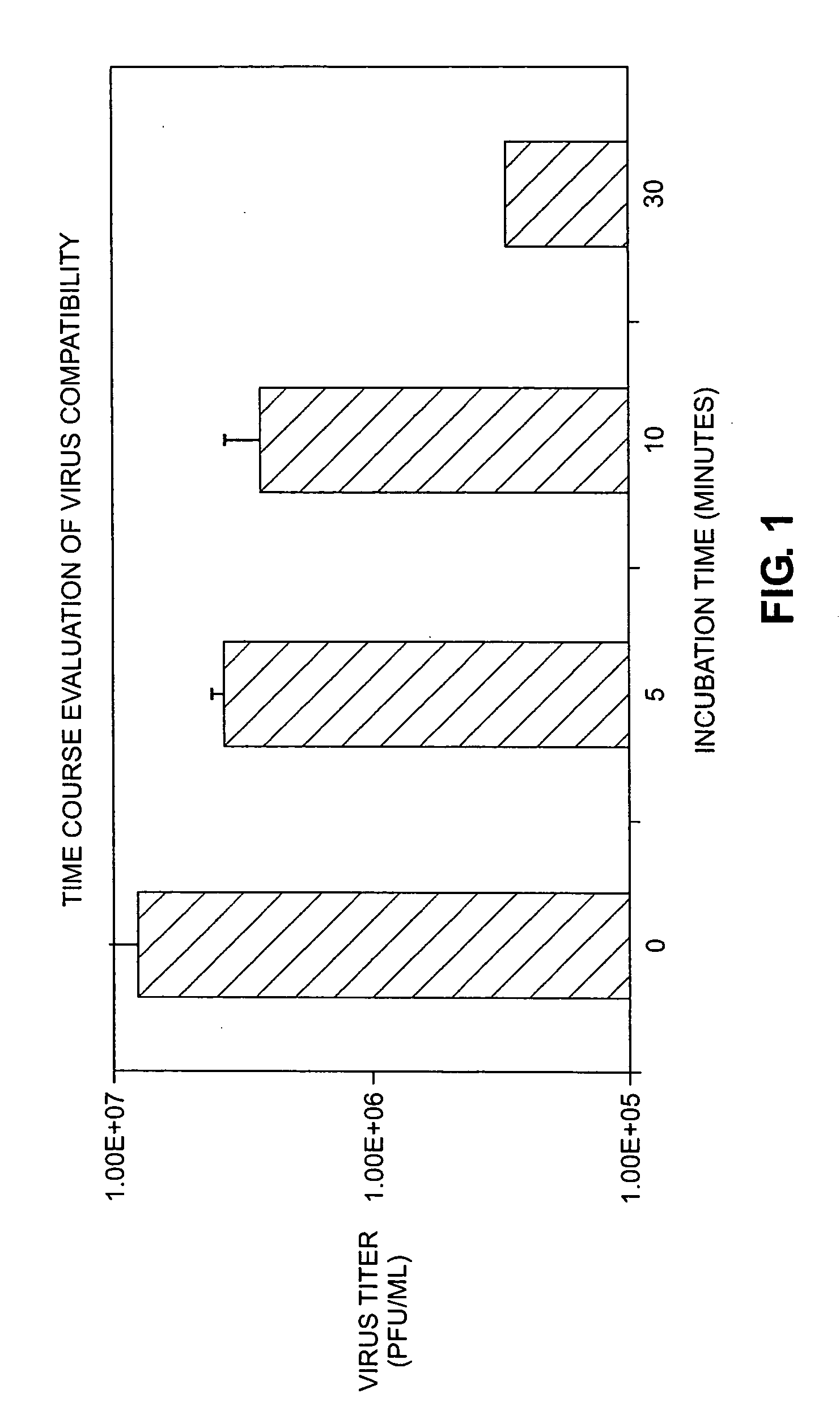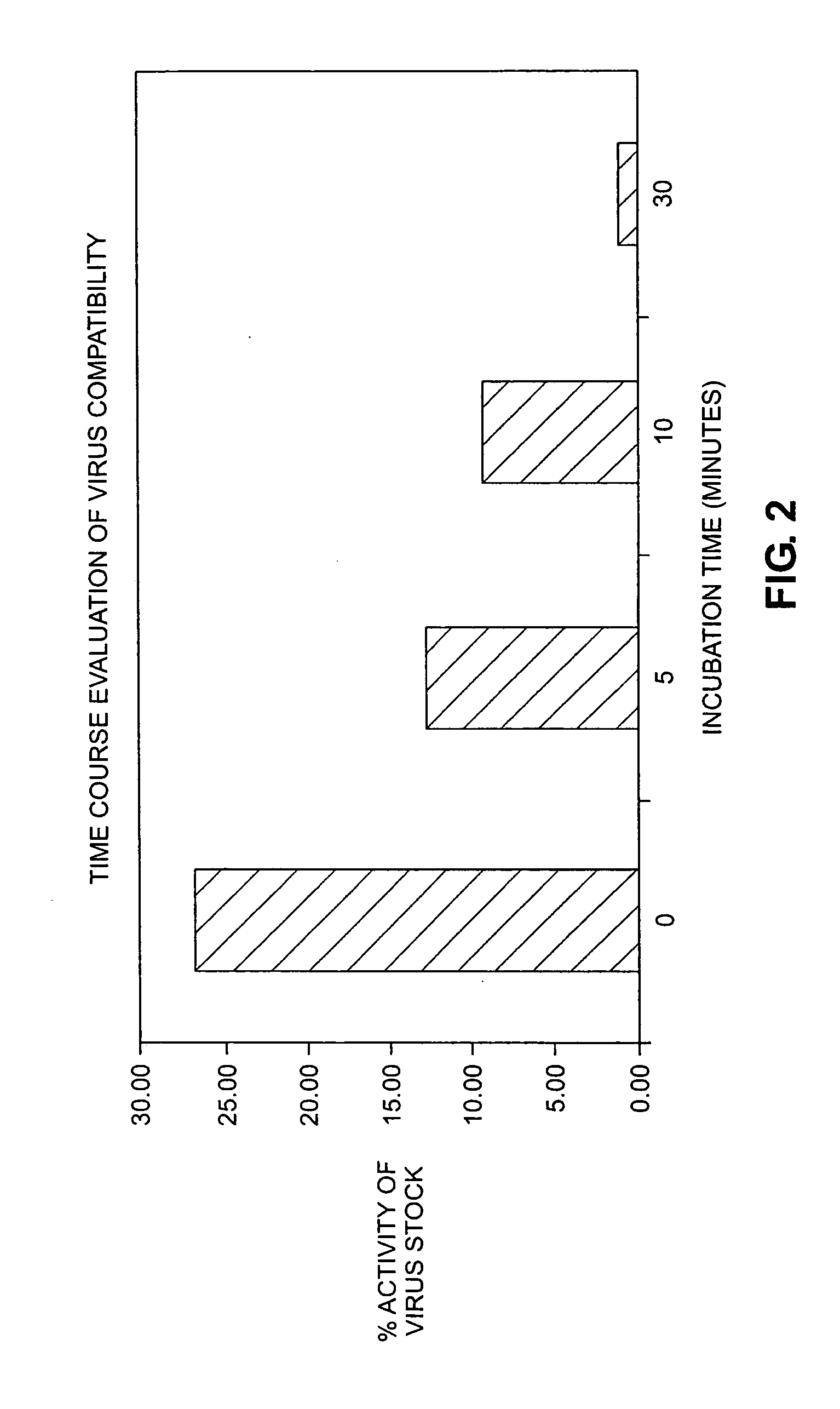Biocompatible medical devices
- Summary
- Abstract
- Description
- Claims
- Application Information
AI Technical Summary
Benefits of technology
Problems solved by technology
Method used
Image
Examples
example 1
Time Course Evaluation of Virus Compatibility
[0063] A CMV-β-gal adenovirus (i.e., an adenoviral vector driven by a CMV (cytomegalovirus) promoter and encoding a β-galactosidase (β-gal) reporter gene) was used as a stock virus in this example.
[0064] Stock virus having a viral titer of 3×107 (also referred to herein as 3×10ˆ7 or 3E+07) infectious units / ml (IU / ml) (also referred to herein as pfu / ml) was incubated in catheters at 37° C. The catheters used were endocardial catheters like those described in international patent application WO / 9922655, the disclosure of which is hereby incorporated by reference in its entirety. These catheters have a proximal portion formed from heat-treated stainless steel and a distal portion formed from a nitinol hypotube (referred to in these examples as “catheter” or “injection catheter” or “needle injection catheter”); the hub is comprised of polycarbonate. After the allotted amount of time (0-30 minutes, where 0 minutes refers to the situation in ...
example 2
Time Course Evaluation of Virus Compatibility
[0067] Procedures similar to Example 1 were followed, except that an additional initial viral titer (4E+08 IU / ml) was examined, both in a catheter and as a control. For the control, the virus was exposed to a polypropylene vial for the appropriate period.
[0068] The number of positive cells was counted: (1) after 0 (flush through) and 30 minutes in the control vial (4E+08 IU / ml), (2) after 0 (flush through) and 30 minutes in the catheter, using the same stock virus titer as the control (4E+08 IU / ml), and (3) after 0 (flush through) and 30 minutes in the catheter, using a lower stock virus titer (3E+07 IU / ml).
[0069] Data are presented in FIG. 3, which presents these data as a percentage of viral stock titer. As in Example 1, there is a significant drop in virus activity as a function of incubation time. For a virus stock titer of 3E+07 IU / ml, a flush through resulted in a 75% loss of activity relative to the viral stock while a 30-minute...
example 3
Time Course Evaluation
[0070] Procedures similar to Examples 1 and 2 were followed for viral solutions having titers of 3.0E+7 IU / ml and 4.5E+8 IU / ml. Positive cells were counted after 0 (flush through), 5, 10 and 30 minutes in the catheter. Data are presented in FIG. 4, which shows a more pronounced drop in activity for the lower concentration over shorter incubation times. This difference, however, becomes less significant at longer incubation times, as also seen in Example 2.
PUM
| Property | Measurement | Unit |
|---|---|---|
| Density | aaaaa | aaaaa |
| Metallic bond | aaaaa | aaaaa |
| Polymeric | aaaaa | aaaaa |
Abstract
Description
Claims
Application Information
 Login to View More
Login to View More - R&D
- Intellectual Property
- Life Sciences
- Materials
- Tech Scout
- Unparalleled Data Quality
- Higher Quality Content
- 60% Fewer Hallucinations
Browse by: Latest US Patents, China's latest patents, Technical Efficacy Thesaurus, Application Domain, Technology Topic, Popular Technical Reports.
© 2025 PatSnap. All rights reserved.Legal|Privacy policy|Modern Slavery Act Transparency Statement|Sitemap|About US| Contact US: help@patsnap.com



